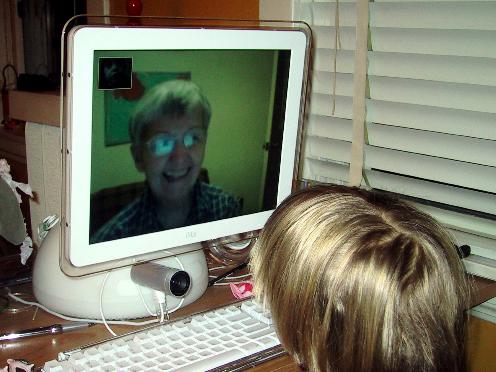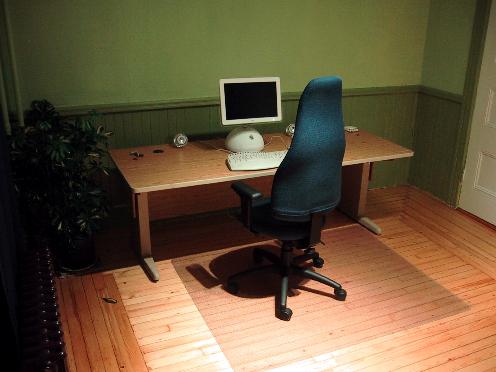Some technical notes (with apologies to Ritchie Simpson):
- The reinvented.net and www.reinvented.net URLs for this site should now be pointing at the same place. That they were not explains why some of you noticed strange content voodoo over the course of today.
- The site search is now working properly (it broke after the move from the old server because of some updates to the [excellent] SWISH-E indexer).
It was heartening, if mildly disturbing, that so many of you pointed out the problems. Perhaps it was because it’s a snow day, and nobody had anything better to do?
ImageWell is a great little program with a simple purpose: it makes it easy to post images to a webserver from a Mac.
Using ImageWell to post an image works like this: drag image onto the ImageWell icon, name it, and upload. The URL of the image gets automatically copied to the clipboard, where it can be then pasted into a weblog editor.
This is so much easier than the old way of doing this — open image editor, crop image, resize, save, open MacSFTP, transfer the file — that it makes frequent image posting an easy, painless task where once it was an occasional inconvenience.
All of which leads me to this image, one of a series of images of Charlottetown graffiti that I took this fall.

Stay tuned for more graffiti as the week progresses.
Here’s a picture of my mother, Oliver’s grandmother, talking with Oliver using Apple’s iChat AV. Both ends of the conversation have an iSight camera, so grandmother and grandson can talk to each other and see each other at the same time.

The video and audio are of excellent quality, even with full-screen video. There’s no complicated setup, directories or other confusion: click on the buddy list and start talking.
This is the “picture phone” future we were promised in the 1960s finally come to effective, easy to use, practical life. If you’re looking for revolutionary, life-changing technology, this is it.
Here’s a snap of my new office. Notice the quality floor refinishing by floor expert Paul Holmes, the rectangular chair mat ($68 at Colpitts), the very adjustable desk (from Summerside Clearance Centre, thanks to Marie Brine’s pointer) and the cool green paint job and plants (both thanks to Catherine).

There’s also absolutely no paper.
I like Safari, especially the fact that my Safari bookmarks are automatically synced to my iDisk. But I also like Firebird, and I’d like to use the same bookmarks in that browser as I do in Safari.
Safari stores its bookmarks in:
~/Library/Safari/Bookmarks.plistwhich is an XML file.
Firebird stores its bookmarks under:
~/Library/Phoenix/Profiles/default/[uniqueid]/bookmarks.htmlwhich is a wonkly-formatted HTML file based on the original Netscape bookmarks file format.
Converting from the Safari-format XML file to the HTML-format Firebird file seemed like a good task to use XSLT for.
Using TestXSLT from Marc Liyanage as a testing tool, I created this Safari2Firebird.xslt style sheet that can be used to transform a Safari bookmarks file into a Firebird bookmarks file.
To do this using TestXSLT:
- Under the XML tab, select the Safari Bookmarks.plist file.
- Under the XSLT tab, select the Safari2Firebird.xslt file you downloaded here.
- Click Process and, optionally, save the result as bookmarks.html and copy to your Firebird profile directory.
I’m neither an XSLT expert nor particularly familiar with Firebird, so I may have missed something here, and this may not work for you. I welcome comments on how to improve the process.
Update: Marcus Kazmierczak helpfully modified the script; here’s his explanation:
I convert the BookmarksBar Folder to Firebird’s Personal Toolbar (including setting the property). I also discard the Address Book and Rendezvous folders and move all the folders in the BookmarkMenu to top level.
I’ve replaced the link above with a link to the updated version.
They may having been doing this all along, but I just noticed that CBC Prince Edward Island has a winter storm watch page.
I’ve switch the server that this website is hosted on, from the old 1995-era machine sitting in my basement at home, to the mildly more sleek 2000-era machine sitting above my head here at the new data centre. The move should be seamless and painless. Please alert me to any irregularities. If you’re reading this post, then you’re seeing the new server.
I think hydrogen fuel cells have entered the public consciousness to the extent that they are now being generally treated as a viable “alternative fuel” mechanism.
I would hazard a guess, however, that the average person thinks:
- Hydrogen is everywhere, so it’s a “free,” readily available fuel.
- Hydrogen fuel cells “burn” hydrogen in a fashion similar to the way that gasoline engines burn gasoline.
Neither is strictly correct.
In the book Fuelling the Future, Dr. Geoffrey Ballard, ” the father of the fuel cell industry,” cleary outlines the following points:
- Hydrogen to be used in fuel cells must be manufactured.
- Fuel cells, which create electricity through a chemical reaction, aren’t an efficient method for creating electricity, but they are an efficient method for storing electricity. They are, basically, batteries.
- From his perspective, the most viable way to create the hydrogen needed to power fuel cells is nuclear power.
This came as a shock to me: I’d been operating under the mistaken, uneducated assumption (mostly fueled by General Motors ads) that hydrogen fell into the same class a solar and wind power; quite clearly it doesn’t.
I’m not revealing anything profound here, but it seems to me that Ballard’s model implies a rebirth of the nuclear power industry, an industry I think many of us thought was effectively dead after Three Mile Island and Chernobyl.
If that’s honestly what’s required, then it’s time to start the public debate about that part of the the fuel cell equation.
I just came from the Formosa, where I was reading this week’s New Yorker, and noticed:
Editor’s Note: The poem by Philip Larkin, “We Met at the End of the Party,” in the October 20th issue, should have been printed in quatrains.
That struck we as eminently worthy of blogcomment. Except Ben beat me to it. Which, as you can see, hasn’t held me back.
One of my favourite things to do when travelling is to sit somewhere and have a cup of tea and read the local newspaper. There is something about reading a local newspaper that captures the essence of a place in a way that’s difficult to get otherwise: both the experience of reading the paper, and what I learn from the paper itself are instructive and often entertaining.
In a somewhat diluted version of this spirit, I noticed that Eastlink’s Digital Cable offering here in Charlottetown now includes channels 260 through 279, a package titled the “Time Zone Pack,” and available for free until February.
These channels are all mirrors of existing basic cable networks but from other time zones. There are CTV, CBC and Global from Vancouver, NTV from Newfoundland, ABC, CBS, NBC, FOX and PBS from Seattle and CITY from Toronto.
Not only does this afford the opportunity of watching programs at unusual times of the day — the supper hour news from British Columbia at 10:00 p.m., for example, or Survivor at 1:00 a.m. — but it also makes local market commercials from “foreign” markets available, which, for me, is the most interesting part of watching different television.
In a similar vein, I noticed that fred, the alternative weekly newspaper from Fredericton, is now available on the newsstand at the Formosa Tea House. More political and issues-driven than The Buzz, reading fred gave me an interesting insight into life in Fredericton. There’s a particularly interesting article in the current issue about a man who’s been camping on the front lawn of the New Brunswick Legislature for 152 days in a campaign to have Ritalin use curbed.
 I am
I am